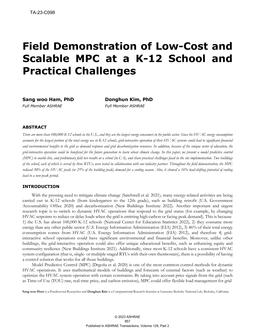-
-
Available Formats
- Options
- Availability
- Priced From ( in USD )
-
Available Formats
-
- Immediate download
-
$16.00Members pay $7.00
- Add to Cart
Customers Who Bought This Also Bought
-

TA-23-C005 – An EEM by Any Other Name: Best Practices for...
Priced From $16.00 -

TA-23-C098 – Field Demonstration of Low-Cost and Scalable...
Priced From $16.00 -

TA-23-C100 – Integrating Building-Scale Solar + Storage +...
Priced From $16.00 -

TA-23-C016 – Cooling Energy Savings in Data Centers in Ho...
Priced From $16.00
About This Item
Full Description
Louvers are used in a wide variety of building applications. Placed on exterior walls, they facilitate airflow through their available vents. When wind/air passes over the blades of a louver, force is exerted on the louver and on the attachments used to secure the louver to the wall. In current practice, empirical formulae are used to calculate wind load on louvers. The accuracy of methods to predict reductions in wind load, however, are limited because of louver porosity, or the open space or gap between louver blades. With numerical-simulation techniques computational fluid dynamics (CFD) and finite-element analysis (FEA), prediction of porosity effect is made more precise. With more accurate wind-load calculations, louver installation often is simpler and less costly. This paper discusses the development of CFD-FEA methodology and compares CFD-FEA with test values for reduction factors. The coupling of CFD and FEA improves calculation of the load from wind flowing over a louver’s blades by determining a reduction factor, which is derived using an equation that models the louver as a billboard. CFD aerodynamic analysis yields the reduction-factor value, which is applied on incoming wind load. Both approaches give comparable results for reduction-factor values. The effect of louver size and AMCA (Air Movement and Control Association) International free-area ratio in relation to reduction factor also is discussed.





